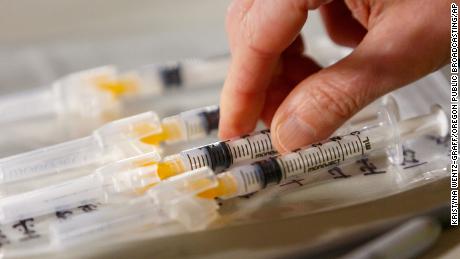Opinion: The Covid disaster in India shows that the future is biological, not digital
At the same time, we may be seeing the end of an extraordinary period of hype. After years of being told that digital technologies would lead us to a post-scarcity future, the reality of the pandemic has been a sharp reminder of how the real world can upend idealistic and utopian fantasies.
The idea that technology will solve major problems has become an article of faith among many. A whole new generation has been led to believe that every challenge has a technological solution and educated to think of problem-solving through a technological fix rather than through addressing root causes and fundamentals. Access to the internet was elevated to become a major development objective as it would lead to “innovations,” with the idea that access to unfettered information was as critical as food, clean water, electricity, clean air and even oxygen.
The current situation in India and in much of Europe and the United States just a few months ago should be a reminder that most of the world may have internet access but it is the basics we need to focus on. Human society is a biological entity: one that affects the real world and, in turn, is affected by it. Now is the moment where we should remember that our future is not digital. It is biological.
The SARS-COV-2 virus has caused such global chaos because of its ability to enter the human body through biological transmission and disrupt its workings. And it is prevented by a vaccine: something that leverages the human body’s natural response to infection.
Our survival depends on maintaining the integrity and vibrancy of natural systems and the biological processes within. That includes the environments we live in, the objects that invade our bodies (such as pollutants and viruses), the things we consume (water, air and food) and the biological consequences of the waste we produce.
Even during the early months of the pandemic when reports showed that earth was benefitting from the decrease in greenhouse gas emissions — since much of the middle and upper-classes were able to learn remotely and work from home — the shift to being indoors was not without consequences.
This more secluded lifestyle was dependent on people working in the real world, growing and making the food, staffing grocery stores and delivering meals to those staying in. Goods ordered via e-commerce still have to get to homes by boat, truck, and delivery driver.
The work-from-home lifestyle only works because an infrastructure of goods and people sustain it. Presently, the system operates on exploiting their services and externalizing most of the cost of this new model. It has biological consequences both on the workers and the natural world (such as excessive waste).
And this real-world infrastructure was deeply affected by the Covid-19 pandemic. Essential workers around the world, whether in hospitals, meat-packing plants in the United States, construction sites in Singapore or glove manufacturers in Malaysia, have all seen outbreaks of Covid-19.
Digital technology can play a role in mitigating and fighting these threats, but they will only serve this purpose if we return to a basic understanding that human survival is fragile and wholly dependent on a viable biosphere. The sooner we realize that fact, the sooner we can ensure that our tech efforts and resources are placed into avenues that actually help human welfare, and not in utopian schemes defined by narrow definitions of human progress.
![]()




